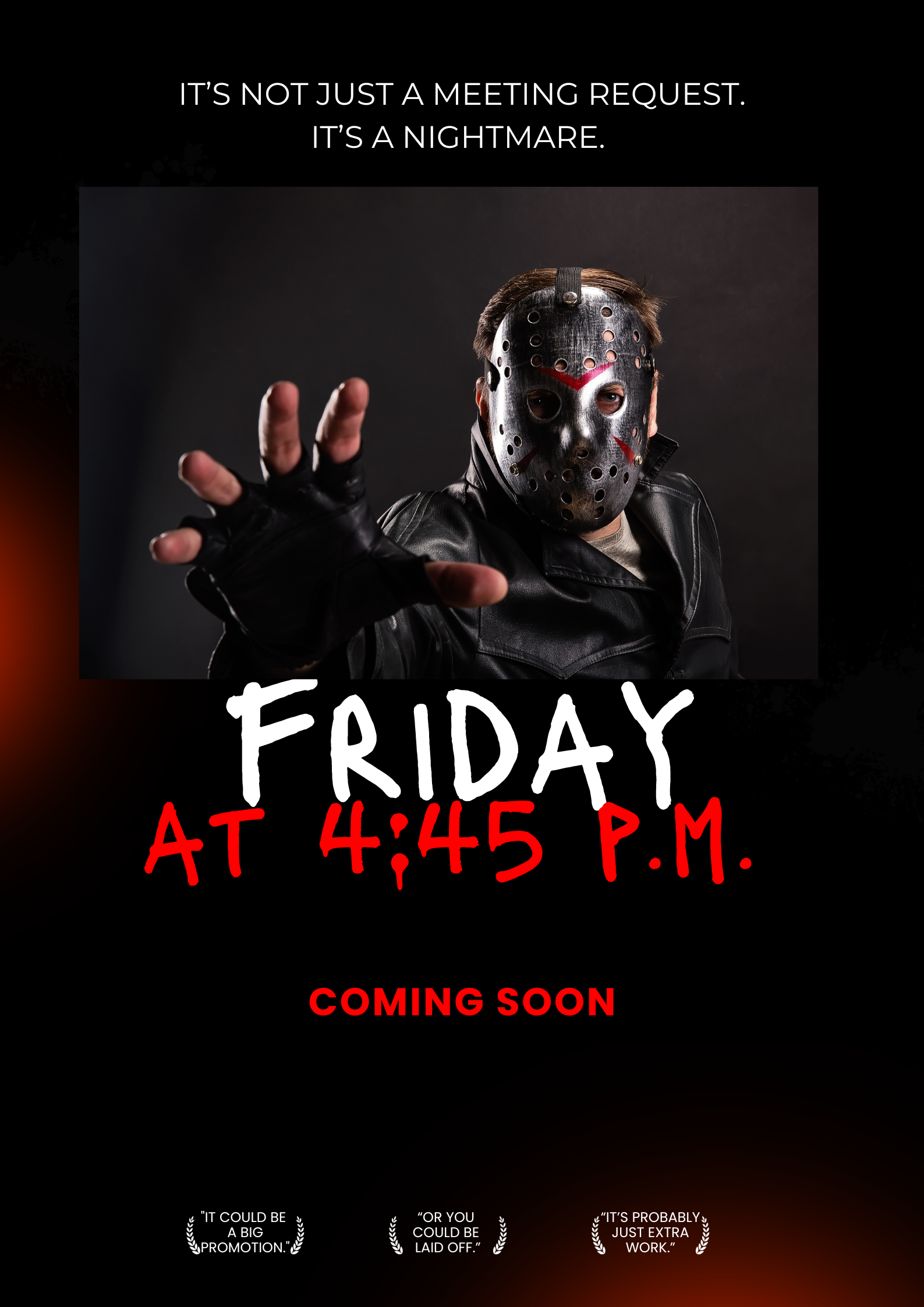
Harnessing the Power of Fear: Halloween Edition

Vol. 3, Edition 2, October 2023
Hi, readers!
Last year’s Halloween camping trip started off great: Campground bedecked with jack-o’-lanterns. A nice tent site set against a backdrop of red, yellow and orange trees. Four families snuggled with kids around the campfire.
And then…Nightmare Forest began. We had no idea an outdoor Halloween attraction was on the other side of those trees.
Machine guns, cannons, chainsaws, sirens, shrieking, lots and lots of screaming – it went nonstop until 1 a.m.
Let me add there were four kids under 6 years old in our group.
I’m an experienced camper who treasures any experience that gives me a funny story, but that was rough. We’ve smiled, but none of us has managed to laugh about it yet.

Mary Pat and her husband, Scott, before the chainsaws and shrieking began.
So, should we brave another family campout this fall? A bit of fear has seeped in.
Let’s face it. Ghouls, goblins and pretend machine guns don’t really scare us grown-ups. But fears of a different, deeper sort influence our decisions. A lot of them begin with “What if….”
This Halloween newsletter is about pushing through fear – whether your own or your team’s – to get to the good stuff on the other side. The payoff includes progress, success and sometimes even quality time with family.
Will I be camping this weekend? You can bet your maniacal chainsaw.

Mary Pat Nimon
President
idea one
Change without chills: Why company changes are scary and what to do about it

Are you a comms pro trying to drive change in your organization?
You’ve likely noticed the mere mention of a company change can send shivers down the spine of even the most seasoned, committed professional. Here’s how to get to the bottom of it.
idea two
Generative AI isn’t abracadabra

To some comms pros, new generative AI tools like ChatGPT can seem threatening. To others, they seem like magic.
At WordsFresh, we’re not afraid. Nor are we starstruck. We’re curious.
Our team has been digging deep into the capabilities of several generative AI tools and exploring how we can best use them to help clients reach their goals. Every week, we share what we’re learning at our staff meeting.
Spoiler alert: For professional writers, generative AI isn’t abracadabra.
Our writers have studied and experimented with “prompt engineering” and a wide range of tools. We continue to try virtually every recommendation given in training seminars and on the expert forums. (Please note: We never put private client information into public models.)
Admittedly, our clients don’t ask us to produce generic content about common topics. Neither are we typically asked to rewrite content that already exists. In these cases, ChatGPT or another tool may be more useful.
Our specialty is writing that’s rooted in business strategy. Writing is thinking, and that’s what our clients expect from us.
We create original work that is specific to the company’s goals and strategy. We bring human creativity and many years of experience that a large language model just can’t duplicate.
Do we use it as a support tool? Absolutely. And it’s amazing.
Here’s an abridged list of best-use cases our writers have found for generative AI:
- Summarizing search results from multiple websites in plain language
- Creating a standard format for quarterly reports and meeting recaps
- Getting clear answers to technical questions about software programs, especially Excel
- Outlining an article on an unfamiliar topic
- Suggesting multiple options for a presentation focus from a core research document
- Generating 100 puns about an animal (trust us, that was valuable)
- Generating headline or subject line suggestions, which often include a useful word or phrase
- Rewriting a sentence that seems “off”
- Drafting a production schedule
- Describing an industry’s typical process for foundational knowledge
- Formulating a list of question ideas for an interview
- Explaining unfamiliar, industry-specific terms
- Creating categories of content from an existing document
- Providing a gap analysis for a planned approach
- Finding that elusive word
Generative AI can mimic human-like patterns. It’s super helpful. But it’s not supernatural.
idea three
Banish meeting nightmares

Work meetings can be scary stuff – messier and crammed with more distractions than a haunted house attraction.
They can also become a chilling reminder of wasted time (AKA money).
Do your own meetings seem never-ending? Do they threaten to turn coworkers into zombies?
If so, here are three steps to help you stop these killers of productivity and morale before they strike again:
- BEFORE: Don’t just send a blank meeting request (especially if you’re the boss). Nothing is worse than the fear of the unknown. Make sure your meeting has a purpose, an agenda and a time limit for each topic – and send it along with the meeting invitation so everyone knows what to expect (and won’t lose sleep over having nothing to share).
- DURING: Use an AI assistant to record and transcribe virtual meetings. These invisible helpers can take notes for you, summarize what was shared and create a list of action items. We like Zoom’s AI Companion because it’s easy to use and free.
- AFTER: Take a few minutes to reflect on what went well and what can be improved – and poll attendees for their feedback, too. Share that list of action items before they disappear into the ether.
If you’re one of our clients, you know we like to keep our weekly check-in meetings to just 15 minutes. Tell us … how are those meetings working for you?
(& a meme)


Harnessing the Power of Fear: Halloween Edition

Vol. 3, Edition 2, October 2023
Hi, readers!
Last year’s Halloween camping trip started off great: Campground bedecked with jack-o’-lanterns. A nice tent site set against a backdrop of red, yellow and orange trees. Four families snuggled with kids around the campfire.
And then…Nightmare Forest began. We had no idea an outdoor Halloween attraction was on the other side of those trees.
Machine guns, cannons, chainsaws, sirens, shrieking, lots and lots of screaming – it went nonstop until 1 a.m.
Let me add there were four kids under 6 years old in our group.
I’m an experienced camper who treasures any experience that gives me a funny story, but that was rough. We’ve smiled, but none of us has managed to laugh about it yet.

Mary Pat and her husband, Scott, before the chainsaws and shrieking began.
So, should we brave another family campout this fall? A bit of fear has seeped in.
Let’s face it. Ghouls, goblins and pretend machine guns don’t really scare us grown-ups. But fears of a different, deeper sort influence our decisions. A lot of them begin with “What if….”
This Halloween newsletter is about pushing through fear – whether your own or your team’s – to get to the good stuff on the other side. The payoff includes progress, success and sometimes even quality time with family.
Will I be camping this weekend? You can bet your maniacal chainsaw.

Mary Pat Nimon
President
idea one
Change without chills: Why company changes are scary and what to do about it

Are you a comms pro trying to drive change in your organization?
You’ve likely noticed the mere mention of a company change can send shivers down the spine of even the most seasoned, committed professional. Here’s how to get to the bottom of it.
idea two
Generative AI isn’t abracadabra

To some comms pros, new generative AI tools like ChatGPT can seem threatening. To others, they seem like magic.
At WordsFresh, we’re not afraid. Nor are we starstruck. We’re curious.
Our team has been digging deep into the capabilities of several generative AI tools and exploring how we can best use them to help clients reach their goals. Every week, we share what we’re learning at our staff meeting.
Spoiler alert: For professional writers, generative AI isn’t abracadabra.
Our writers have studied and experimented with “prompt engineering” and a wide range of tools. We continue to try virtually every recommendation given in training seminars and on the expert forums. (Please note: We never put private client information into public models.)
Admittedly, our clients don’t ask us to produce generic content about common topics. Neither are we typically asked to rewrite content that already exists. In these cases, ChatGPT or another tool may be more useful.
Our specialty is writing that’s rooted in business strategy. Writing is thinking, and that’s what our clients expect from us.
We create original work that is specific to the company’s goals and strategy. We bring human creativity and many years of experience that a large language model just can’t duplicate.
Do we use it as a support tool? Absolutely. And it’s amazing.
Here’s an abridged list of best-use cases our writers have found for generative AI:
- Summarizing search results from multiple websites in plain language
- Creating a standard format for quarterly reports and meeting recaps
- Getting clear answers to technical questions about software programs, especially Excel
- Outlining an article on an unfamiliar topic
- Suggesting multiple options for a presentation focus from a core research document
- Generating 100 puns about an animal (trust us, that was valuable)
- Generating headline or subject line suggestions, which often include a useful word or phrase
- Rewriting a sentence that seems “off”
- Drafting a production schedule
- Describing an industry’s typical process for foundational knowledge
- Formulating a list of question ideas for an interview
- Explaining unfamiliar, industry-specific terms
- Creating categories of content from an existing document
- Providing a gap analysis for a planned approach
- Finding that elusive word
Generative AI can mimic human-like patterns. It’s super helpful. But it’s not supernatural.
idea three
Banish meeting nightmares

Work meetings can be scary stuff – messier and crammed with more distractions than a haunted house attraction.
They can also become a chilling reminder of wasted time (AKA money).
Do your own meetings seem never-ending? Do they threaten to turn coworkers into zombies?
If so, here are three steps to help you stop these killers of productivity and morale before they strike again:
- BEFORE: Don’t just send a blank meeting request (especially if you’re the boss). Nothing is worse than the fear of the unknown. Make sure your meeting has a purpose, an agenda and a time limit for each topic – and send it along with the meeting invitation so everyone knows what to expect (and won’t lose sleep over having nothing to share).
- DURING: Use an AI assistant to record and transcribe virtual meetings. These invisible helpers can take notes for you, summarize what was shared and create a list of action items. We like Zoom’s AI Companion because it’s easy to use and free.
- AFTER: Take a few minutes to reflect on what went well and what can be improved – and poll attendees for their feedback, too. Share that list of action items before they disappear into the ether.
If you’re one of our clients, you know we like to keep our weekly check-in meetings to just 15 minutes. Tell us … how are those meetings working for you?
(& a meme)

 SUBSCRIBE TO
SUBSCRIBE TO
Three fresh ideas (and a meme)
Our monthly take on today’s marketing and communications topics… and a little fun, too.


